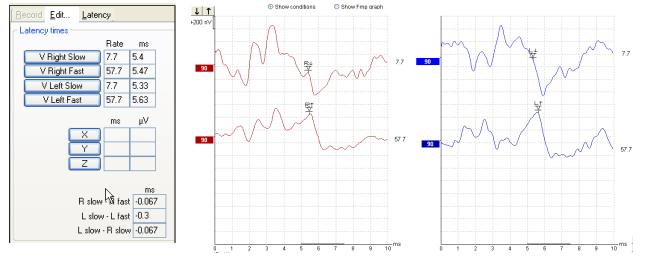Eclipse Support
Available Training
-
Types of decibels in audiology
-
Tips for the use of Sanibel disposable Tab and Snap electrodes
-
How to Prepare a Baby for Automated ABR
-
Daily System Check
-
IA OAE Suite TEOAE
-
Mounting the Eartip Adaptor
-
IA OAE Suite DPOAE
-
Electrode Tips & Tricks
-
oVEMP Testing
-
P300/MMN Recording
-
Threshold Testing
-
Neuro Latency Testing
-
Middle Latency Response (MLR)
-
Fmp and Residual Noise
-
How to Improve Evoked Potential Recordings
-
Electrical Auditory Brainstem Response (eABR)
-
Electrocochleography
-
Bayesian Weighting
-
Cochlear Microphonics
-
cVEMP Testing
-
Basic ABR Testing
-
ALR / Cortical Evoked Response Audiometry
-
ASSR Hearing Test
-
How to mark ABR waveforms
-
How to make changes to a saved session
-
How to add a new patient in OtoAccess® Database
-
How to print a report
-
How to customize your ABR protocol
-
How to use the latency tab
-
How to use the recording tab
-
How to use the top panel
-
How to use the edit tab
-
How to navigate the test screen
-
How to prepare the patient for oVEMP testing
-
How to prepare the patient for cVEMP testing
-
How to prepare the patient for ABR and ASSR testing
-
How to prepare the patient for threshold cortical testing
-
How to prepare the patient for ECochG testing
Rate Study Protocol
What is the Rate Study Protocol?
The preprogrammed Rate Study test is designed to evaluate the integrity of the auditory nerve and look for retrocochlear lesion abnormalities. Changes in response latency between fast stimulation rates and slow stimulation rates are recorded and compared. The Eclipse offers both slow and fast markers and performs the calculation between the inter-peak Wave V latencies (between Left and Right) as well as the intra-peak latency shift change from slow to fast rate.

How does it work?
The test is run like a traditional ABR. The clinician tests at a high intensity (i.e.. 90dBHL) with a slow rate (i.e. 7.7Hz). A second run is completed using a fast rate (i.e. 57.7Hz). The Wave V for all four tracings is marked with the appropriate markers. After they are marked, the interaural wave V and the intra-aural shift from the rate change is calculated.
An interaural wave V latency difference greater than 0.2 to 0.4ms is generally considered abnormal (Bauch et al., 1996; Selters & Branckmann,1977).
References
Bauch, C.D., Olsen, W. O., & Pool, A. F. (1996) ABR indices: Sensitivity, specificity, and tumor size. American Journal of Audiology. (5) 97-104.
Selters, W. A. & Brackmann, D. E. (1977) Acoustic Tumor Detection with brain stem electric response audiometry. Archives of otolaryngology. (103) 181-187.
